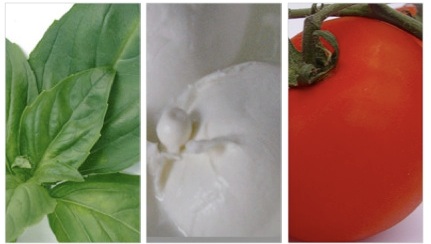Over the past few days, a couple of pieces in the American press — later translated in Italian media — have drawn attention to some of the least glamorous aspects of the culinary trend “Made in Italy.” In The New York Times, a graphic piece by Nicholas Blechman entitled “Extra Virgin Suicide: The Adulteration of Italian Olive Oil” illustrates some of the systemic and long-lasting issues in the extra virgin olive oil commodity chain. The other, “The Death of Italian Cuisine? Kids in Rome are eating just as much junk as kids in America,” appeared on Slate.com. Signed by Jeannie Marshall, the article is an excerpt of her book The Lost Art of Feeding Kids: What Italy Taught Me about Why Children Need Real Food.
The titles are self-explanatory, and both pieces decry the loss of tradition, genuineness, and quality of what Italians produce, sell, and eat. The exposé on olive oil has touched a raw nerve among producers and consumers in Italy. That the sector needs reforms is clear to most, as proved by a new law safeguarding the quality of olive oil that was passed in January 2013, though the EU temporarily suspended its application. However, producers of high quality oil pointed out that general accusations actually hurt those who work well and make sure to distribute only high-quality products, such as the olive oils that carry the IGP mark (indicazione geografica protetta). This was, for instance, the position of Coldiretti Toscana, from the association of agricultural producers in Tuscany. Some Italian readers lamented how the illustration singles Naples out as the main port where the counterfeiting takes place, while others have interpreted the piece as an assault against “Made in Italy” products. If the food blog Dissapore admits that the attack is somehow well deserved, its readers have expressed more varied positions: anger at accusations coming from a country that many Italians feel has nothing to teach them about food; commiseration about corruption and politics in Italy; and critique of the EU policies that allow the place of bottling (rather than the origin of the olives) to be featured on labels.
The inspiration for Marshall’s Slate article is a visit to a pizzeria in Roma, where a waiter asked the writer’s son if he wanted Coke with his pizza, startling his mother and causing some family drama. Many readers — including myself and food historian Simone Cinotto, who commented on the Facebook page of the Association for the Study of Food and Society — found the article slightly passé as we all remember that we already drank Coke with our pizza when we were children, back in the 1960s. Italy has felt the effects of globalization on its food system from the early 20th century, but the arrival of many foreign — in particular American — products intensified during the economic miracle of the 1960s. Marshall states, “There’s an innocence here when it comes to these sugary drinks that reminds me of North America in the 1970s… In Italy sweet soft drinks are perceived as children’s drinks, and there’s an implicit trust that no one would make something for children that was actually bad for them.” Why should Italy be different from other post-industrial societies? I am afraid Italians have lost that innocence quite some time ago; children’s consumption of packaged, mass-produced snacks instead of homemade treats or fruits dates back to the 1970s. Most people are well aware that those foods have limited nutritional qualities and debates about changes in the Mediterranean diet and childhood obesity, which affects the population differently according to class, gender, age, and location, are frequent and far-reaching.
Food habits are changing in Italy for a variety of reasons, partly as a consequence of globalization, and partly as the result of inadequacies in the food system, often connected with the political and economic crisis in Italian society. A few days ago, the police closed 23 restaurants in Rome that were revealed to be money-laundering fronts for the camorra. Noted food writer Stefano Bonilli observed how the news did not seem to particularly upset the restaurant world, especially in the upper segment, which he considers a sign that resignation about the troubles with Italian food is now prevalent.
Not everybody is ready to surrender, though. For instance, Itchefs-GVCI, Virtual Group of Italian Chefs, has proclaimed January 17th as the International Day of Italian Cuisines, which started “as a reaction against the systematic forgery of Italian cuisine and products.” Italian culinary traditions are very popular worldwide. Attention to quality will be necessary to maintain this position in the future, but less sensationalist information would help to maintain a more accurate perception of Italian food.


Comments are closed.